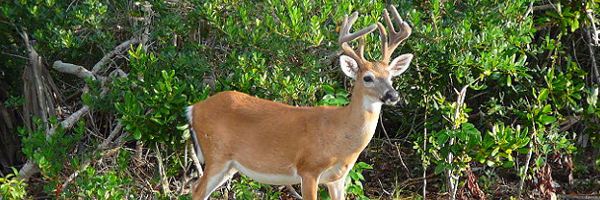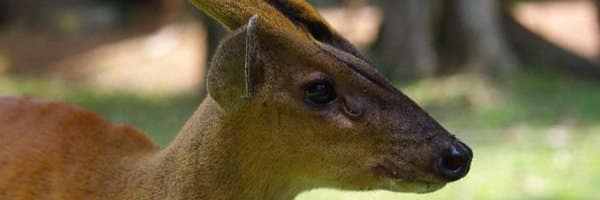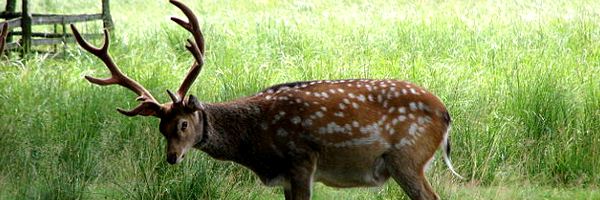Key Deer – Odocoileus virginianus clavium
The Key Deer is a subspecies of the White Tailed Deer but they are much smaller. They males average in size from 50 to 75 pounds. They females are from 40 to 65 pounds. They are about 2 ½ feet tall so when people do see them they automatically assume they are looking at young deer instead of a species that is full grown.
Key Deer Distribution
The only known location for the Key Deer is in the Florida Keys area. Their natural habitat here has continued to be taken away due to development in those areas by humans. Today what remains of their habitat extends from the Sugarloaf Key to the Bahia Honda Key. They mainly stick to the wetland areas here and have about 8,500 acres of refuge land where they live.
Key Deer Behavior
Many people love to observe these deer swimming from one of the islands to the next. These deer are well loved by tourist so it is common for people to be out around the area looking to catch a glimpse of them. They don’t seem to mind it and in fact, they often seem just as curious about humans.
Key Deer Feeding
There are more than 150 different types of plants that the Key Deer will feed on. Berries make up most of their diet though and they will consume those that are black, red, or white. They do need to stay close to plenty of fresh drinking water. For some reason these deer have a need to drink more frequently than others. They also feed on mangroves in the area.
Key Deer Reproduction
For the Key Deer mating season is any time of the year. However, they do have a period of time when they seem to take part in it more than others. October is when most mating activity is taking place. However, the mating process isn’t always successful so a low percentage of the does will actually have fawns from that occurring.
Key Deer Conservation
Conservation efforts are in place for the Key Deer due to the fact that they are on the Endangered Species list. Hunting of the Key Deer has been banned since 1939 when the number of them was drastically low due to people doing so. Even with such efforts in place though there aren’t believed to be more than 800 of them living in the wild.
The fact that they don’t away produce any offspring through their mating efforts also makes it difficult for the population to increase. Approximately 40 of them are killed annually on a highway that goes through their natural habitat. To help with this situation the speed limit through a long stretch of it is 45 during the day and 30 at night. The speed limit is strictly enforced and tickets will be written for any vehicles exceeding those posted limits.
Yet at one point the population was only about 25 approximately 50 years ago does show conservation efforts are helpful. It just takes time to show a significant difference. Without these conservation efforts continuing it is believed that this species of deer would already be extinct.
Key Deer and Human interaction
Since the Key Deer does live in such close proximity to humans, they don’t seem to be afraid of them. They do show up often along the roadways or eating in the gardens of residential homes. Some people like the idea of these deer being present but others complain about the damages that they cause. They will even take food out of the hands that people offer to them. However, this is illegal so you don’t want to get caught doing so.
(Photo taken by Averette)







